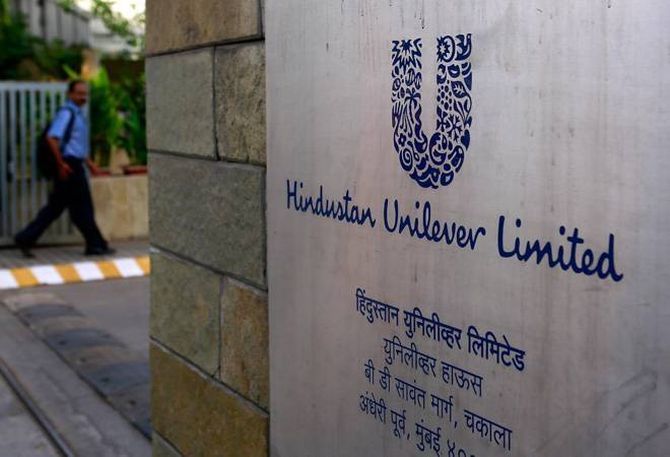The investigation against HUL was initiated on the basis of an anonymous complaint. It alleged ‘profiteering’ of around Rs 535 crore between November 15, 2017, and February 28, 2018.

The National Anti-profiteering Authority, the anti-profiteering juggernaut rolls on despite questions around its constitutional validity.
It recently held against Hindustan Unilever (HUL), a 98-page long order, which sent shockwaves in the Indian FMCG sector.
Interestingly, HUL had deposited around Rs 124 crore to the Consumer Welfare Fund (CWF) on its own, even without any clarity in law on how to calculate ‘commensurate reduction’ as per the GST anti-profiteering provisions (Section 171 of CGST Act).
The investigation against HUL was initiated on the basis of an anonymous complaint (later, joined by others). It alleged ‘profiteering’ of around Rs 535 crore between November 15, 2017, and February 28, 2018.
A few key questions arising out of the HUL order are addressed below:
What were the key findings of the National Anti-profiteering Authority (NAA) against HUL?
HUL was in violation of Section 171; it increased base prices of 12,016 items in their software post a GST rate reduction on November 15, 2017, instead of reducing tax rates on such products.
Also, HUL challenged the alleged ‘profiteered amount’ and sought several reductions.
The NAA rejected almost all of them - two key ones are discussed below:
HUL contended that passing on the benefit of credit transitioned from the pre-GST period through TRAN-2 form to end-customers under Section 140(3) of the CGST Act cannot form part of anti-profiteering investigations under Section 171.
The NAA rejected the claims on the grounds that anti-profiteering pertains to passing on the benefit of ‘input credit’, which includes credit transitioned from the pre-GST regime.
HUL claimed Rs 45.31 crore reduction on account of reduced refund under area-based incentive schemes - at 28 per cent GST rate, HUL used to receive a refund of 58 per cent of the 14 per cent CGST for factories in Uttarakhand, etc; at 18 per cent GST rate, the refund will be of a reduced CGST component of 9 per cent.
The NAA rejected this saying there was no absolute loss to HUL; it would still get a proportional refund.
Also, there is no direct correlation between area-based benefits and MRP (which was same all over India).
What are the legal options available to HUL now?
The only option that seems to be available is to challenge this order through a writ petition before an appropriate high court.
Given how fact-driven this order is on merits, a high court might be reluctant to interfere, unless the constitutional validity of the entire anti-profiteering mechanism is challenged in the said writ, along with arguments of merits.
Two other writs have already been admitted in the Delhi and the Bombay high courts against adverse NAA orders.
What are the key learnings for the FMCG sector from the HUL order?
(i) The entire FMCG distribution chain is exposed to anti-profiteering scrutiny and ought to prepare accordingly in 2019.
Prior to HUL, on September 7, 2018, in the case of Kalptaru Departmental & General Stores and Anr. v. Sharma Trading Company (TS-419-NAA-2018-NT), Sharma Trading Company, which is a distributor and stockist of HUL, was found to have ‘profiteered’ for not passing on the benefit of the reduction in GST rate from 28 per cent to 18 per cent on “Vaseline VTM 400 ml”.
(ii) Arguments about practical challenges in reducing price immediately post a rate reduction will not fly; immediate price reduction is mandatory. HUL’s arguments about practical/logistical challenges in reducing MRP overnight for all products were rejected by relying upon a 2004 Supreme Court order in GSK Pharmaceuticals case in the context of Drug Price Control Orders (which held that drug price reduction would have to be mandatorily passed to consumer the moment reduction becomes effective, irrespective of possible losses).
(iii) Instead of a price reduction, the supply of extra quantity/grammage for the same price is permissible in some cases.
This benefit was denied earlier in the Sharma Trading case (Supra) since distributors didn’t have the right to offer extra grammage; only the manufacturer has.
This was allowed for HUL. However, extra quantity/grammage has to be done for each and every stock-keeping-unit (SKU) and not at an entity level.
On actual one-to-one examination apropos HUL’s SKUs, a reduction of only Rs 68 crore was allowed against HUL’s claim of Rs 118.68 crore.
(iv) Unless your strategy is to pose a constitutional challenge to the anti-profiteering mechanism, any plan for complying with Section171 will need to factor in the above learnings, unreasonable as some of them may seem.
Specifically, price-reduction post a GST rate reduction seems non-negotiable, except in a few cases where the supply of extra grammage/quantity for the same price will be considered sufficient compliance.
Sudipta Bhattacharjee is partner, tax controversy management & contract documentation, Advaita Legal.
Photograph: PTI Photo













 © 2025
© 2025